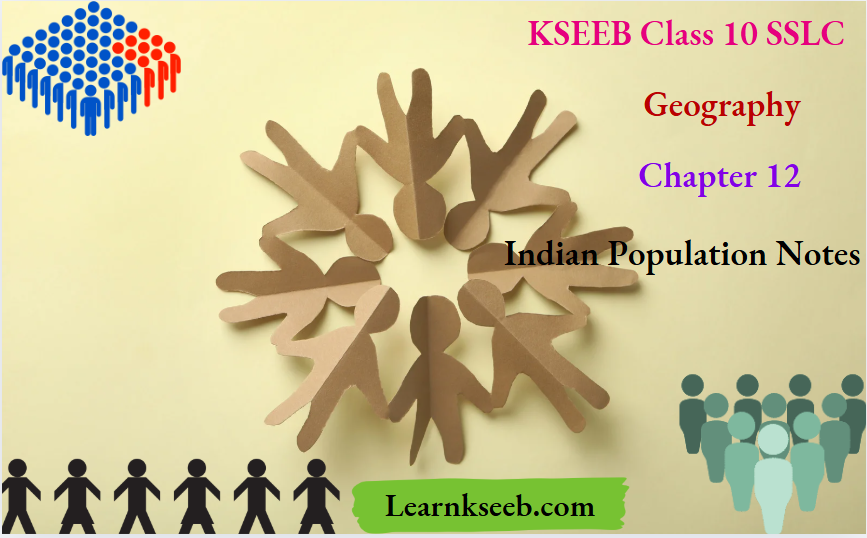KSEEB Class 10 SSLC Geography Chapter 12 Indian Population Notes
The total number of people living in a particular area is called “population”.
India is the second populous country in the world, next to China.
- As per 2011 census, the total population of India was 121.01 crore At the beginning of the last century, during 1901 – 1921, population growth was slow.
- The period from 1921 to 1951 was considered as a period of moderate growth.
- The growth rate of population was very high from 1951 – 1991.
- However, the growth rate started declining from 1981 onwards. It declined from 24.7% in 1981 to 17.64% in 2011
KSEEB Class 10 SSLC Geography Chapter 12 notes
Many factors are responsible for the growth of population in India :
- High birth rate
- Low death rate
- The most important impacts of population growth are: – Unemployment, shortage of food and malnutrition, low standard of living, environmental pollution etc.
- The Government of India has taken some measures to check the growth of population.
- The distribution of population in India is uneven. This is due to varied geographical and cultural factors.
Indian Population SSLC Geography notes
- The number of people per sq km is called density of population. According to 2011 census, the average density of population in India is 382 per km².
- Based on population density, India can be divided into three zones: 1) Areas of high density 2) Areas of medium density and 3) Areas of low density.
- Factors affecting on distribution of population :
- Physical features
- Climate
- Soils
- Resources
- Industries and commerce

KSEEB SSLC Class 10 Social Science Notes History
- Chapter 1 Advent of Europeans to India Notes
- Chapter 2 The Extension of the British Rule Notes
- Chapter 3 The Impact of British Rule in India Notes
- Chapter 4 Opposition to British Rule in Karnataka Notes
- Chapter 5 Social and Religious Reformation Movements Notes
- Chapter 6 The First War of Indian Independence (1857) Notes
- Chapter 7 Freedom Movement Notes
- Chapter 8 Era of Gandhi and National Movement Notes
- Chapter 9 Post Independent India Notes
- Chapter 10 The Political Developments of 20th Century Notes
KSEEB SSLC Class 10 Social Science Notes Political Science
- Chapter 1 The Problems of India and their Notes
- Chapter 2 Indian Foreign Policy Notes
- Chapter 3 India’s Relationship with Other Countries Notes
- Chapter 4 Global Problems and India’s Role Notes
- Chapter 5 International Institutions Notes
KSEEB SSLC Class 10 Social Science Notes Sociology
- Chapter 1 Social Stratification Notes
- Chapter 2 Labour Notes
- Chapter 3 Social Movements Notes
- Chapter 4 Social Problems Notes
KSEEB SSLC Class 10 Social Science Notes Geography
- Chapter 1 Indian Position and Extension Notes
- Chapter 2 Indian Physiography Notes
- Chapter 3 Indian Climate Notes
- Chapter 4 Indian Soils Notes
- Chapter 5 Indian Forest Resources Notes
- Chapter 6 Indian Water Resources Notes
- Chapter 7 Indian Land Resources Notes
- Chapter 8 Indian Mineral & Power Resources Notes
- Chapter 9 Indian Transport and Communication Notes
- Chapter 10 Indian Industries Notes
- Chapter 11 Indian Natural Disasters Notes
KSEEB SSLC Class 10 Social Science Notes Economics
- Chapter 1 Development Notes
- Chapter 2 Rural Development Notes
- Chapter 3 Money and Credit Notes
- Chapter 4 Public Finance and Budget Notes
